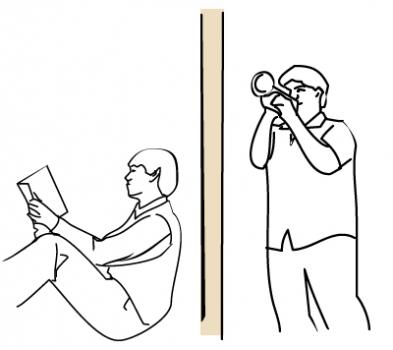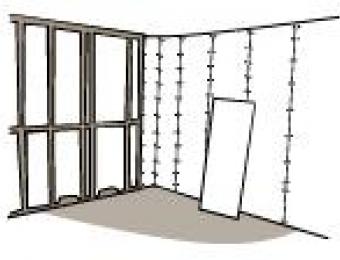
We often retreat to our homes when the the need for privacy and quiet becomes overwhelming. Even within our own walls though, sound can still penetrate and distract. Party walls, apartment living and busy roads are often the source of disruptions. Inside the home, bathrooms, bedrooms, music studios and home cinemas all have particular requirements when it comes to controlling how much sound is allowed in and out. While the materials that the walls are constructed from and their added insulation often have a great deal to do with soundproofing, the house frame itself can be used as a barrier against noise as well.
Acoustic insulation
For the purpose of soundproofing, the most basic approach is to ensure that you have the right kind of insulation installed. Insulation that is designed for the purpose of soundproofing is known as 'acoustic insulation'. While acoustic insulation does also have thermal insulative properties (and an R-value as a result), it's normally only designed to be effective for the purpose of damping sound, so in most cases you will also need to use some kind of thermal insulation as well. Most acoustic insulation comes in the form of batts or blankets.
Properties of acoustic insulation
Acoustic insulation is generally composed of glasswool, rockwool or a similar material. Its effectiveness as an insulator of sound is dependent on many different factors, but can most easily be determined by looking at its Weighted Sound Reduction Index (Rw) (also known as 'Weighted Difference Level'). This value determines how much sound is blocked by a particular system or material, and can be applied to any material that helps to block sound. An increase of one Rw unit roughly corresponds to a reduction of 1dB of noise.
Timber frames
In a traditionally framed house, the wall framing and internal wall coverings (generally plasterboard) often help sound to travel through walls. This is because the wall studs inadvertently transfer the sound. The sound bounces off the plasterboard wall in one room, travels through the stud and into the plasterboard mounted on the back of the same stud in the adjoining room. For that reason, one of the most effective ways to ensure walls in a traditionally framed home are soundproofed is to install what's known as a double frame. These consist of two unattached wall frames, and are commonly used to separate dwellings in semi-detached homes and duplexes. A double frame has the added bonus of allowing extra insulation to be packed inside the wall cavity.
Metal frames
Metal framed houses have a poor reputation when it comes to sound. Some claim that the frame itself is responsible for a great deal of noise as it expands and contracts with the weather. This is difficult to verify, however it is known that metal studs have the capacity to transmit more sound than timber, which tends to absorb noise somewhat better.
Alternative framing materials
Frames constructed from structural insulated panels are quite good at preventing external noise from penetrating inside your home. The use of alternative framing materials such as straw bale, mud brick and logs can also reduce sound pollution inside your home as these materials tend to be quite thick and dense.





